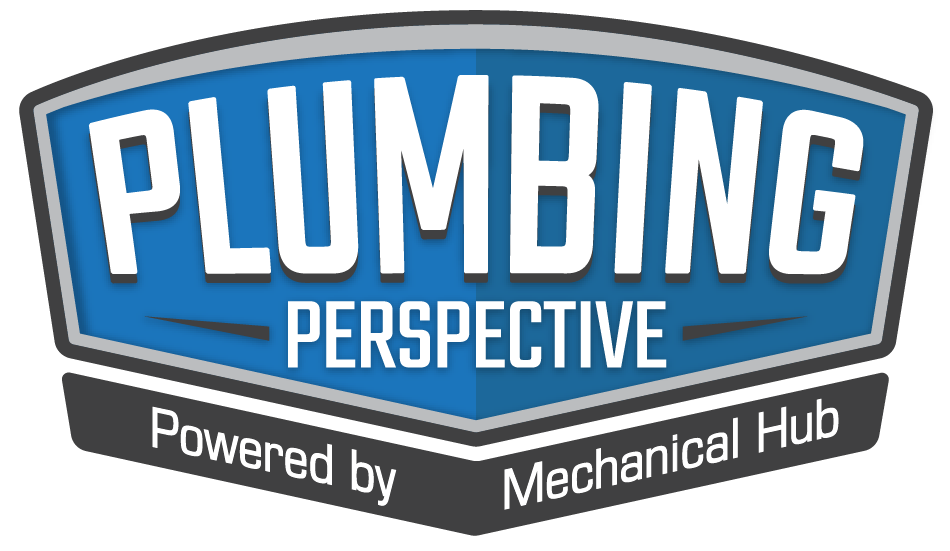In recent years, the world has witnessed a significant increase in the adoption of cryptocurrencies in various industries. As a result, it’s essential for businesses to keep up with the latest technology trends, including digital currencies. This article will discuss how cryptocurrency can boost a plumbing business and drive growth, exploring case studies, implementation tips Read more
Whats New

In recent years, the world has witnessed a significant increase in the adoption of cryptocurrencies in various industries. As a result, it’s essential for businesses to keep up with the latest technology trends, including digital currencies. This article will discuss how cryptocurrency can boost a plumbing business and drive growth, exploring case studies, implementation tips, and leveraging crypto partnerships for greater success.

Understanding How Accepting Cryptocurrency Payments Can Benefit Plumbing Businesses
Expanding Customer Base
By accepting cryptocurrency payments, plumbing businesses can attract a new demographic of customers that prefer to utilize digital currencies for their transactions. This allows companies to tap into a market they may not have been able to access before, expanding their potential customer base and increasing overall revenue.
Reducing Transaction Fees
One of the most significant advantages of using cryptocurrencies is the reduction in transaction fees. Traditional payment methods, such as credit cards, often charge high processing fees that can eat into a business’s profits. On the other hand, cryptocurrency transactions typically have lower fees, helping plumbing businesses save money and increase their profit margins.
Streamlining International Payments
Cryptocurrencies are decentralized, meaning they are not tied to any specific country or government. This makes international transactions more straightforward and faster, as businesses no longer need to worry about currency conversion rates or international banking fees. For plumbing businesses that work with international clients, accepting cryptocurrency payments can simplify the payment process and make it more efficient.
Exploring Case Studies of Plumbing Companies That Have Successfully Integrated Cryptocurrencies
Case Study 1: Crypto-Forward Plumbing Company
A plumbing company in the United States decided to integrate cryptocurrency payments into their business model to attract more customers and stay ahead of the competition. By allowing customers to buy btc with credit card, the company saw a significant increase in new clients who were interested in utilizing digital currencies for their transactions.
This plumbing company also benefited from reduced transaction fees, as cryptocurrency payments typically carry lower fees than traditional methods. This allowed the business to increase its profit margins and reinvest more money into company growth.
Case Study 2: International Plumbing Partnership
Another plumbing business, located in Europe, decided to partner with an international plumbing company that already accepted cryptocurrency payments. By collaborating with this company, the European plumbing business could leverage the benefits of accepting digital currencies and attract a broader customer base.
This partnership also allowed the European plumbing company to streamline its international transactions, as payments in cryptocurrency eliminated the need for currency conversion and associated fees. As a result, the business experienced improved efficiency and increased revenue.
Case Study 3: Plumbing Company Sponsorship
A plumbing company in Australia decided to sponsor a local cryptocurrency event, showcasing their willingness to embrace digital currencies and attract new customers. This sponsorship not only increased the company’s visibility within the cryptocurrency community but also allowed them to network with potential clients and industry professionals.
Through this sponsorship, the plumbing company was able to establish itself as a forward-thinking business, making it more attractive to customers looking for innovative solutions to their plumbing needs.
Tips for Implementing Cryptocurrency Payment Systems and Marketing Your Plumbing Business
Choose the Right Cryptocurrency Payment Processor
To accept cryptocurrency payments, plumbing businesses need to choose a reliable and secure payment processor. Research various options and select one that best meets your business’s needs, ensuring it supports the cryptocurrencies you want to accept and offers competitive transaction fees.
Integrate Cryptocurrency Payments into Your Existing Systems
Once you have chosen a cryptocurrency payment processor, integrate it into your existing payment systems, such as your website or point-of-sale system. This will ensure a seamless transition for your customers, making it easy for them to use digital currencies to pay for your services.
Train Your Staff
Educate your staff on cryptocurrencies and how to process cryptocurrency payments. Ensure they understand the benefits of accepting digital currencies and can answer any questions customers may have about using them.
Market Your Cryptocurrency Adoption
Promote your business’s decision to accept cryptocurrencies on your website, social media platforms, and any other marketing materials. By showcasing your willingness to embrace new technologies, you can appeal to tech-savvy customers and demonstrate your commitment to innovation.
Leveraging Crypto Partnerships and Sponsorships to Drive Growth in the Plumbing Industry
Partner with Cryptocurrency Companies
Collaborating with cryptocurrency companies can help plumbing businesses establish themselves within the digital currency community and attract new customers. Seek out partnerships with businesses that offer complementary services, such as crypto wallet providers or cryptocurrency exchanges, to create mutually beneficial relationships.
Sponsor Cryptocurrency Events and Initiatives
By sponsoring cryptocurrency events and initiatives, plumbing businesses can increase their visibility within the digital currency community and demonstrate their commitment to innovation. This can help attract new customers and establish your business as a leader in the plumbing industry.
Offer Discounts for Cryptocurrency Payments
To incentivize customers to use cryptocurrencies for their transactions, consider offering discounts or promotions for those who choose to pay with digital currencies. This can help drive adoption and make your business more appealing to customers interested in using cryptocurrencies.
In conclusion, implementing cryptocurrency payments and leveraging partnerships within the digital currency community can significantly boost a plumbing business’s growth. By staying ahead of the curve and embracing new technologies, plumbing businesses can attract new customers, streamline their operations, and ultimately increase their revenue.

We’re living in an age where technology has become an inherent part of everyday life and is constantly changing the way we interact with each other. The Internet has opened up an entire new world of possibilities and now, with the advent of Web3, the potential for disruption is greater than ever before! In this Read more
We’re living in an age where technology has become an inherent part of everyday life and is constantly changing the way we interact with each other. The Internet has opened up an entire new world of possibilities and now, with the advent of Web3, the potential for disruption is greater than ever before!
In this article, we’ll take a look at how blockchain technology and Web3 could revolutionize the way we communicate, transact and do business online.

What is Web3?
Many associate Web3 with the cryptocurrency market and the opportunity tobuy Bitcoin at https://paybis.com/ . But it’s more than that.
Web3 is the third generation of the World Wide Web, where users are in control of their data and can interact directly with one another without intermediaries. This decentralized web enables new applications and business models that were not possible before, such as peer-to-peer lending and decentralized exchanges.
Web3 also has the potential to provide a more democratic and open internet, where users are not tracked or censored by central authorities.
How will Web3 change the world?
But how exactly will Web3 alter our world? Let’s see.
Greater data privacy and security
Web3 is the next generation of the Wеb, one that is decentralized and powered by blockchain technology. This new infrastructure will provide greater data privacy and security for users, as well as a number of other benefits.
One of the most important aspects of Web3 is that it will give users control over their own data. With traditional centralized systems, user data is often stored in unprotected databases that are vulnerable to hacks and breaches. However, with Web3, user data will be stored on a decentralized network of computers, making it much more protected.
Breakdown of big players and new business opportunities for ordinary people
The Internet as we know it is changing. This new era is being driven by a desire to make the Internet more open, accessible, and secure for everyone. One of the critical ways that Web 3.0 will achieve this is by decentralizing the web. It means that instead of a few centralized platforms controlling everything, people will spread power among many different people and organizations. It will have a significant impact on how businesses operate online.
New business models will need to emerge to take advantage of the opportunities presented by Web 3.0. For example, instead of there being a few dominant social media platforms, we could see a proliferation of smaller, niche networks. Instead of having a handful of massive e-commerce sites, we could see countless small businesses and individual sellers operating directly with one another. The possibilities are endless.
Better supply chain management
Web3 will make it possible to manage our supply chains much more efficiently. By using smart contracts and other web-based technologies, we will be able to track goods and materials as they move through the supply chain and ensure that everyone involved is working together smoothly.
This will help to reduce waste, increase transparency, and overall make our supply chains much more efficient.
No intermediaries
The way business is done today is very inefficient. There are so many go-betweens and intermediaries that it can take a lot of stuff to get things done. This is one of the key areas stopping people from doing business. Bureaucracy and banks are suffocating SMBs.
But what if there was a way to do business without all these intermediaries? What if you could connect with anyone in the world directly without having to go through a bank or a government?
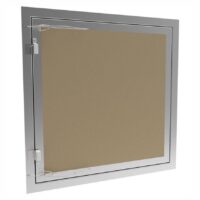
As a trade professional in the plumbing industry, you know how important it is to have easy access to plumbing systems when performing maintenance or repairs. However, accessing pipes or valves hidden behind walls or ceilings can take time and effort. It is where removable drywall access doors come in – they are a game-changer Read more
As a trade professional in the plumbing industry, you know how important it is to have easy access to plumbing systems when performing maintenance or repairs. However, accessing pipes or valves hidden behind walls or ceilings can take time and effort. It is where removable drywall access doors come in – they are a game-changer for the plumbing industry, providing a simple and efficient solution for accessing plumbing systems.
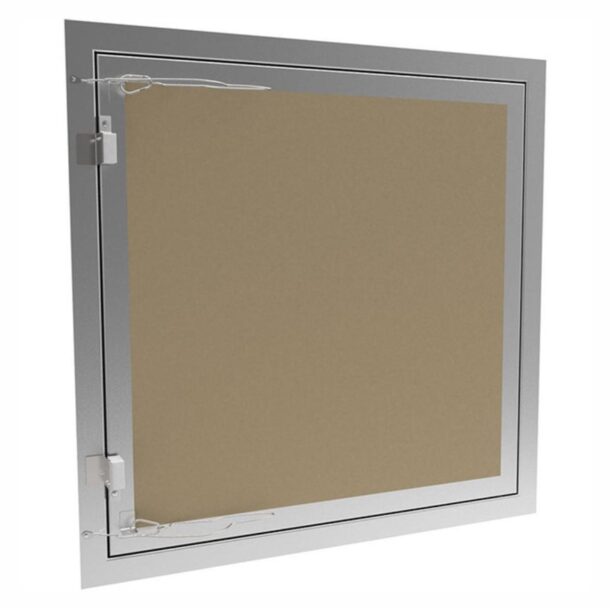
Types of Plumbing Access Panels
There are various plumbing access panel doors available on the market. Each type has its functions and features, and trade professionals must choose the most suitable to fit their needs. Here are some types of plumbing access panel doors available:
- Removable drywall access doors – These doors, like the Babcock-Davis removable drywall access door, are designed to be easily installed and removed from drywall surfaces. They provide easy access to plumbing systems while maintaining the aesthetics of the surrounding wall or ceiling.
- Hinged access doors – Hinged access doors are attached to the wall or ceiling with hinges and can be opened and closed like a traditional door. Both residential and commercial uses are appropriate for them, and they are available in various sizes and materials.
- Fire-rated access doors – Fire-rated access doors can help your project meet fire code regulations and are suitable for installation in areas where fire resistance is required. They come in different ratings and materials, including steel and aluminum.
- Soundproof access doors – Soundproof access doors are designed to minimize noise transmission and are ideal for installation in sound-sensitive areas such as music studios or conference rooms.
Choosing the right plumbing access panel door depends on various factors, including the type of plumbing system access, the location of the access point, and the required level of security and durability. Trade professionals should carefully evaluate the different kinds of doors available and select the one that best meets their needs.
The Benefits of Installing a Removable Drywall Access Door
Efficient and Easy to Install
Removable drywall access doors are easy to install, saving time and money for trade professionals. You can easily install the unit as long as you have the necessary tools so that it functions well without causing damage to the surrounding drywall. It also blends seamlessly with the surrounding wall or ceiling, maintaining the room’s aesthetics.
Durable and Secure
They’re also highly long-lasting, thanks to their welded aluminum door and textured coating that keeps them looking good even after repeated use. The access door is secured by tamper-resistant screws, providing added security and ensuring that it remains in place until it removes for maintenance or repair work.
Improved Customer Satisfaction
In addition to the efficiency and time savings benefits, using removable drywall access doors can also improve customer satisfaction. Homeowners appreciate the minimal damage to their walls or ceilings, and the seamless design of the access door ensures that their home maintains its aesthetics. The quick and easy access to plumbing systems also reduces the disruption to their daily routine, which is especially important for families with young children or busy schedules.
Conclusion
The removable drywall access door is a game-changer for trade professionals in the plumbing industry. It’s easy to install, use and virtually invisible after installation. Whether you’re a residential or commercial plumber, adding removable drywall access doors to your toolkit will revolutionize your plumbing maintenance.
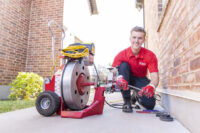
As the owner of a plumbing business. or as someone who wants to start their own plumbing business, you’ll know that competition in this industry can be fierce. It’s a great business to have because people will always need plumbers, so you’ll never be out of work, but of course, other people will have the Read more
As the owner of a plumbing business. or as someone who wants to start their own plumbing business, you’ll know that competition in this industry can be fierce. It’s a great business to have because people will always need plumbers, so you’ll never be out of work, but of course, other people will have the same idea. If you want to be successful, you need to set yourself apart from your competition, but knowing how to do this can be a challenge. The good news is there are ways you can do it; read on to find out what some of them are to help you get started.
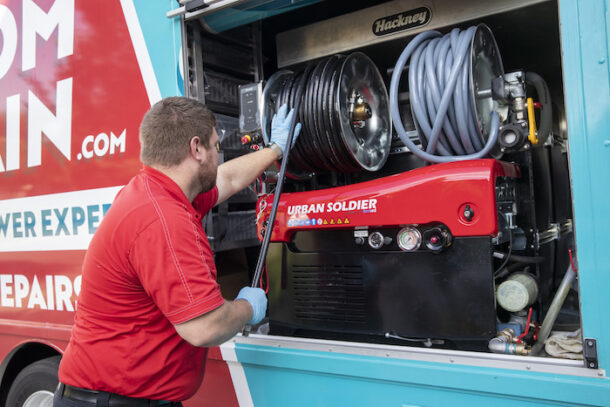
Offer Exceptional Customer Service
Many people will be able to do the work that plumbers do and will have the experience and qualifications to back this up. However, they won’t all be able to offer exceptional customer service, and it’s this that people will remember. After all, they will expect you to fix their plumbing issue, but if you are polite, friendly, and go above and beyond where possible, you’ll definitely stick in their minds. This means they will come to you again the next time they need any plumbing work, and hopefully, they’ll tell their friends and family about you as well.
Things can still go wrong, even if you do have amazing customer service and excellent plumbing skills. Knowing how to handle complaints and problems in a polite and courteous manner will go a long way, and you might keep the customer and gain a great reputation at the same time.
Use Quality Materials
Another way to ensure your plumbing business stands out is to use the best quality materials. You could go to the same plumbing store as everyone else, or you could get pipework that has been specially made using hydroforming by experts. What is going to be best for your customer, and what is going to last longer and do a better job? It’s highly likely to be the latter.
You can make a name for yourself if you are known as being the plumbing company that uses the very best. If you don’t have to charge too much extra, this will help as well, but make sure you’re still making a profit, or you won’t be able to continue for very long.
Provide Transparent Pricing
We’ve briefly touched on pricing above, but it’s an important point to make about standing out in a crowded marketplace. You don’t have to be the cheapest to be the business that people want to use. In fact, you can be one of the more expensive plumbers and still find a large customer base.
The key is transparent pricing. What people don’t like is being given a final price without any explanation about what it is they are paying for. They might find it untrustworthy, especially if the cost is higher than they expected. If you can list out everything you are charging for and show people why they are paying what you’ve billed them for, they’ll be much happier about paying. Show them all the receipts and how much profit you’re making if you want to take this idea to the extreme – it can really make a difference, and you’ll be able to charge more and stand out for the right reasons.

Working in the trades business can be challenging. You need to spend time learning and perfecting your skill set, but it is also important that you focus on doing as much as you can to stand out and get ahead of the competition. Starting out as a new plumber can be pretty daunting, and there Read more
Working in the trades business can be challenging. You need to spend time learning and perfecting your skill set, but it is also important that you focus on doing as much as you can to stand out and get ahead of the competition. Starting out as a new plumber can be pretty daunting, and there are a lot of ideas and processes that you should be thinking about moving forward.
Make sure you focus on doing as much as possible to improve your prospects, and to give yourself the greatest chances of success. There are a lot of things that you need to make the most of right now, and this is something that you have to keep in mind as much as possible. Try to work on the best ways of being able to do this. Here are some of the key examples.
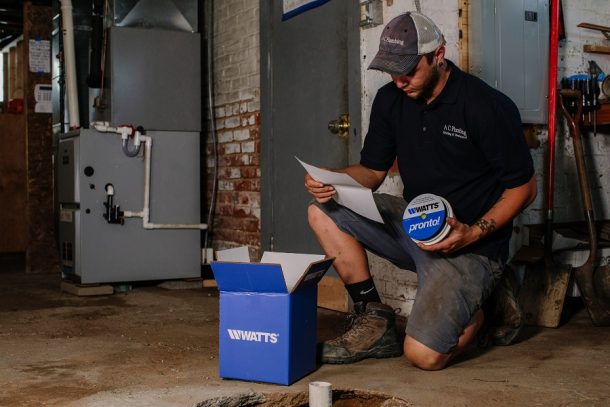
Promote Yourself Effectively
Promoting yourself effectively is one of the best things that you need to do as a budding new plumber, and this is something to work on right now. Try to make sure you come up with some of the best ideas you can use to get your name out there and achieve success. You have to improve and boost your reputation, and make sure you do as much as possible to achieve this. Focusing on social media marketing is one of the most effective ways of being able to achieve this right now, and there is a lot to consider here moving forward. Do your best to focus on being able to achieve this process, and there are a lot of things that you need to get your name out there and really get people excited about the business and you as a professional
Develop a Customer Base
Developing a customer base is one of the key things that you need to improve upon as a budding plumber, and this is the area where you are able to achieve success moving forward. There are a lot of things that play a part in this, and a lot of it is about developing a strong reputation and being able to improve the way you do things as a plumber. You have to provide service of the highest quality, as well as present yourself in a professional and reliable way, and this is one of the key things that you can do to boost reputation and help secure a strong customer base for regular business.
Always do Everything By the Book
There can be a tendency to cut corners when you are first starting out because you want to rush through things incredibly quickly. However, this is something that you should be looking to avoid as much as possible. You need to do what you can to be able to ensure you do things by the book, and this is a great way of being able to make the most of this right now. This means making sure you have the right tools and that you fit and repair things in the correct way. It means remembering to wear a mask and use hand sanitizer. In fact, you could even combine this step with the marketing step by heading to 4 All Promos and stocking up on some branded hand sanitizer. Ensure you do everything in the right way, and that you always place priority on being able to be honest and forthright; this can make all the difference to how you are perceived.
There are plenty of steps you can take that are going to allow you to improve upon this, and there are so many things that play a role in this process moving forward. Try to focus on doing what you can to improve your prospects this year and try to stand out as a new and reliable plumber. Being able to make use of these factors is definitely something that you should be looking to make the most of right now, and there are a lot of things that can help you significantly with this as a working professional.
For more info, check out this blog on some of the best plumbing tools.
